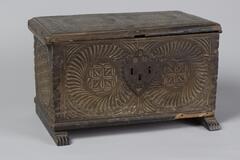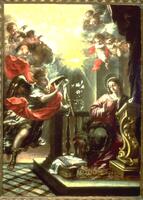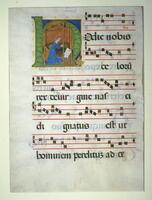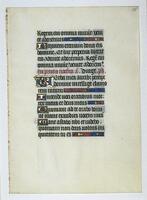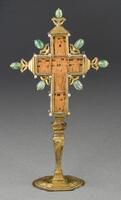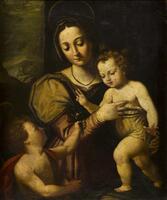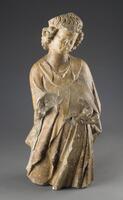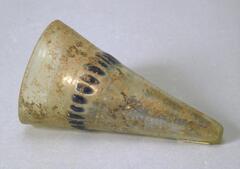96 Items in this Learning Collection
Collection Object
Collection Object
Collection Object
Collection Object
Collection Object
Collection Object
Collection Object
Collection Object
Collection Object
Collection Object
Collection Object
Collection Object
Collection Object
Collection Object
Collection Object
Collection Object
Collection Object
Collection Object
Collection Object
Collection Object
Collection Object
Collection Object
Collection Object
Collection Object
Collection Object
Collection Object
Collection Object
Collection Object
Collection Object
Collection Object
Collection Object
Collection Object
Collection Object
Collection Object
Collection Object
Collection Object
Collection Object
Collection Object
Collection Object
Collection Object
Collection Object
Collection Object
Collection Object
Collection Object
Collection Object
Collection Object
Collection Object
Collection Object
Collection Object
Collection Object
Collection Object
Collection Object
Collection Object
Collection Object
Collection Object
Collection Object
Collection Object
Collection Object
Collection Object
Collection Object
Collection Object
Collection Object
Collection Object
Collection Object
Collection Object
Collection Object
Collection Object
Collection Object
Collection Object
Collection Object
Collection Object
Collection Object
Collection Object
Collection Object
Collection Object
Collection Object
Collection Object
Collection Object
Copyright
All Rights Reserved
()
Bowl with radial design and inscribed rim
Accession Number
1961/1.186
Title
Bowl with radial design and inscribed rim
Artist(s)
Iranian
Artist Nationality
Iranian
Object Creation Date
early 13th century
Medium & Support
fritware with pale blue-green glaze and overglaze lustre painting
Dimensions
3 1/8 in. x 12 1/8 in. x 12 1/8 in. ( 8 cm x 30.8 cm x 30.8 cm )
Credit Line
Museum purchase made possible by the Margaret Watson Parker Art Collection Fund
Label copy
From Kashan.
Lustre glazed pottery was continuously produced in different parts of the Islamic world from the ninth to the eighteenth centuries. Some of the finest luster products, such as this bowl, are attributed to Kashan, a city in central Iran whose kilns excelled in this technique during the twelfth and thirteenth centuries. The rim of this piece is inscribed with an extremely cursive and interconnected type of naskh script, which thrice repeats the phrase “glory and progress”; otherwise the inscription is largely ornamental. Although the majority of Kashan luster vessels contain rich figural designs, this one is largely occupied by an eight-pointed geometric pattern that is probably inspired by metalwork. Although in very good condition, the center of the bowl shows signs of wear, suggesting that it may have been used for food.
Yasser Tabbaa, Guest Curator, ‘Art of the Written Word,” 1/15–6/5/2005
Subject matter
"The general appearance of this vessel, its nearly perfect state of preservation, the dark chocolate brown color of the lustre painting, and the manner in which the exterior piece has been decorated all suggest that it belongs with the group of ceramics excavated by villagers near the medieval city of Jurjan, in the coastal plain southeast of the Caspian Sea. Some of the pieces excavated at Jurjan may be of local manufacture, but the lustre-painted examples appear to have been produced in the central Iranian city of Kashan, a noted ceramic-producing center during the twelfth-fourteenth centuries. The heart-shaped leaves placed point-upward around the circumference of the museum's bowl are known on a number of Kashan lustre-painted vessels."
Physical Description
"A Persian inscription is incised into the broad band of lustre decorating the vessel's rim. The main element in the decoration is a loosely drawn eight-pointed star from which a further series of eight- and sixteen-pointed stars are generated; beyond them are registers filled with medallions and cartouches. This structure, unusual in ceramic decor, is reminiscent of that found on metalwork vessels of this same period from Iran."
Primary Object Classification
Ceramic
Primary Object Type
bowl
Collection Area
Western
Rights
If you are interested in using an image for a publication, please visit http://umma.umich.edu/request-image for more information and to fill out the online Image Rights and Reproductions Request Form.
Keywords
Iranian
Islamic (culture or style)
Kashan
Persian-Farsi (language)
Seljuk pottery styles
bowls (vessels)
ceramic ware (visual works)
inscriptions
lusterware
stars (motifs)
thirteenth century (dates CE)
1961/1.186
Title
Bowl with radial design and inscribed rim
Artist(s)
Iranian
Artist Nationality
Iranian
Object Creation Date
early 13th century
Medium & Support
fritware with pale blue-green glaze and overglaze lustre painting
Dimensions
3 1/8 in. x 12 1/8 in. x 12 1/8 in. ( 8 cm x 30.8 cm x 30.8 cm )
Credit Line
Museum purchase made possible by the Margaret Watson Parker Art Collection Fund
Label copy
From Kashan.
Lustre glazed pottery was continuously produced in different parts of the Islamic world from the ninth to the eighteenth centuries. Some of the finest luster products, such as this bowl, are attributed to Kashan, a city in central Iran whose kilns excelled in this technique during the twelfth and thirteenth centuries. The rim of this piece is inscribed with an extremely cursive and interconnected type of naskh script, which thrice repeats the phrase “glory and progress”; otherwise the inscription is largely ornamental. Although the majority of Kashan luster vessels contain rich figural designs, this one is largely occupied by an eight-pointed geometric pattern that is probably inspired by metalwork. Although in very good condition, the center of the bowl shows signs of wear, suggesting that it may have been used for food.
Yasser Tabbaa, Guest Curator, ‘Art of the Written Word,” 1/15–6/5/2005
Subject matter
"The general appearance of this vessel, its nearly perfect state of preservation, the dark chocolate brown color of the lustre painting, and the manner in which the exterior piece has been decorated all suggest that it belongs with the group of ceramics excavated by villagers near the medieval city of Jurjan, in the coastal plain southeast of the Caspian Sea. Some of the pieces excavated at Jurjan may be of local manufacture, but the lustre-painted examples appear to have been produced in the central Iranian city of Kashan, a noted ceramic-producing center during the twelfth-fourteenth centuries. The heart-shaped leaves placed point-upward around the circumference of the museum's bowl are known on a number of Kashan lustre-painted vessels."
Physical Description
"A Persian inscription is incised into the broad band of lustre decorating the vessel's rim. The main element in the decoration is a loosely drawn eight-pointed star from which a further series of eight- and sixteen-pointed stars are generated; beyond them are registers filled with medallions and cartouches. This structure, unusual in ceramic decor, is reminiscent of that found on metalwork vessels of this same period from Iran."
Primary Object Classification
Ceramic
Primary Object Type
bowl
Collection Area
Western
Rights
If you are interested in using an image for a publication, please visit http://umma.umich.edu/request-image for more information and to fill out the online Image Rights and Reproductions Request Form.
Keywords
Iranian
Islamic (culture or style)
Kashan
Persian-Farsi (language)
Seljuk pottery styles
bowls (vessels)
ceramic ware (visual works)
inscriptions
lusterware
stars (motifs)
thirteenth century (dates CE)
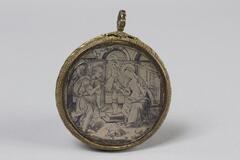
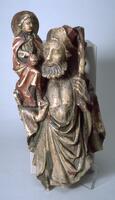
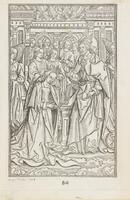
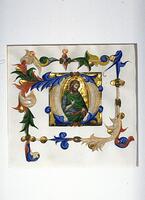
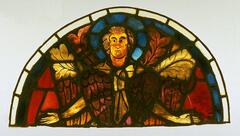

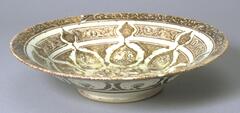
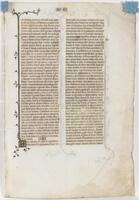
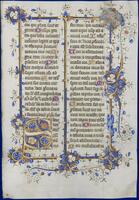

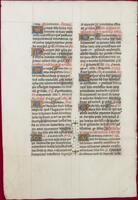
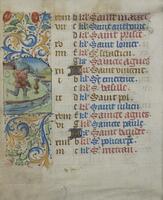
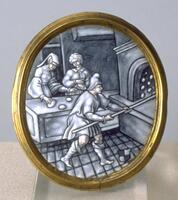
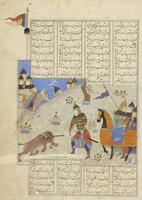
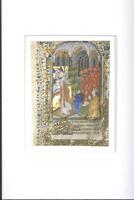


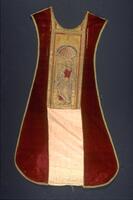

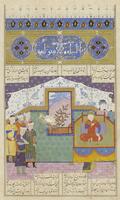

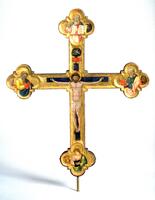
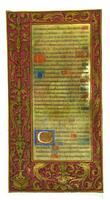
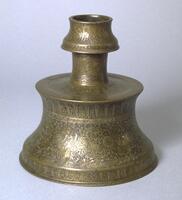
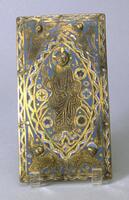
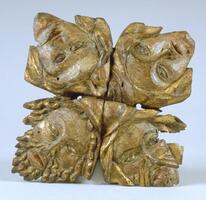
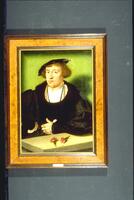
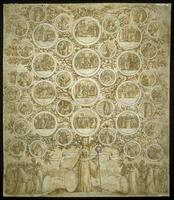
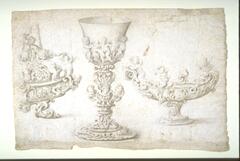
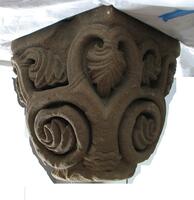
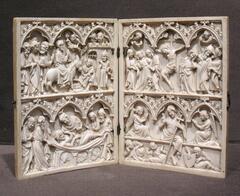
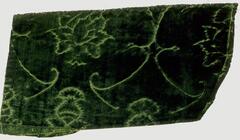
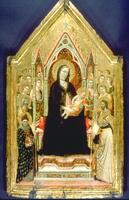
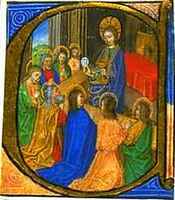



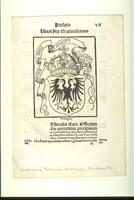

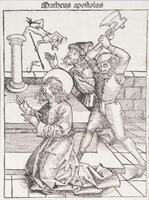
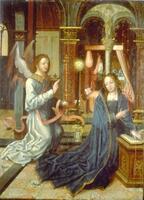
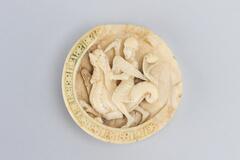


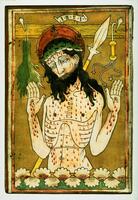

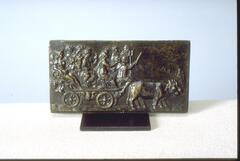
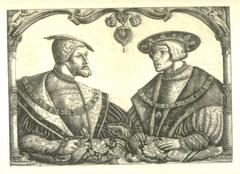
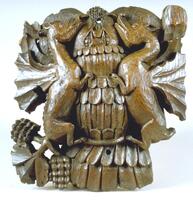
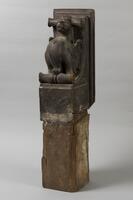
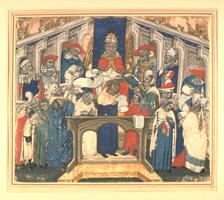
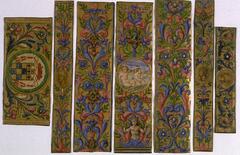
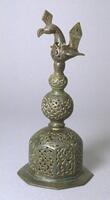
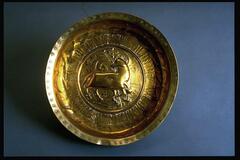

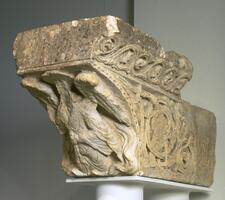
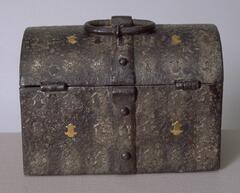
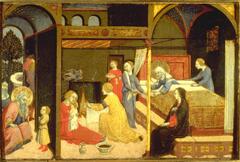

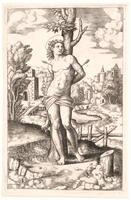
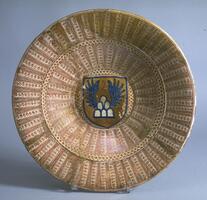
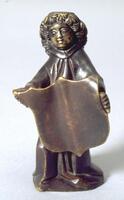


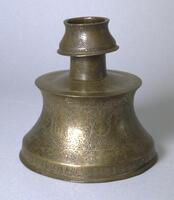
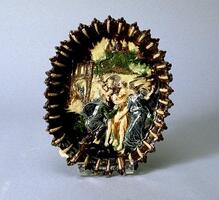
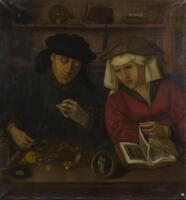
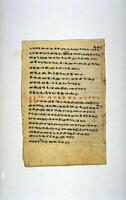

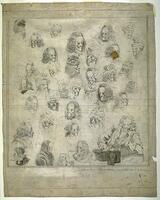
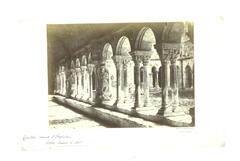
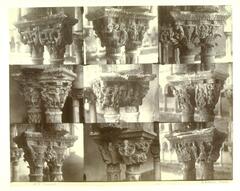

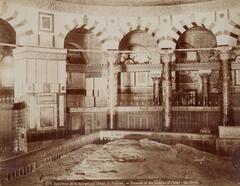
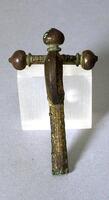
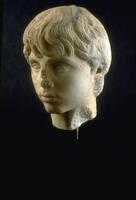

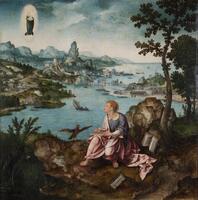

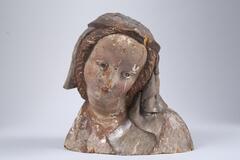
![This rectangular panel depicts four sacred figures rendered in dark hues with passages of vibrant red against a gold background. The upper edge of the gilded frame bears the prayer known as the "Hail Mary" ("Ave Maria Gratia Plena Domin[us tecum]"). This rectangular panel depicts four sacred figures rendered in dark hues with passages of vibrant red against a gold background. The upper edge of the gilded frame bears the prayer known as the "Hail Mary" ("Ave Maria Gratia Plena Domin[us tecum]").](/media/W1siZiIsIjIwMjIvMDUvMjUvMzZ5bWpwaTBuNl9kZWZhdWx0LmpwZyJdLFsicCIsInRodW1iIiwiMjQweDIwMCJdXQ?sha=182c62b7143d052b)

